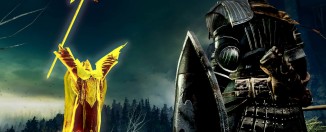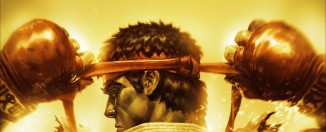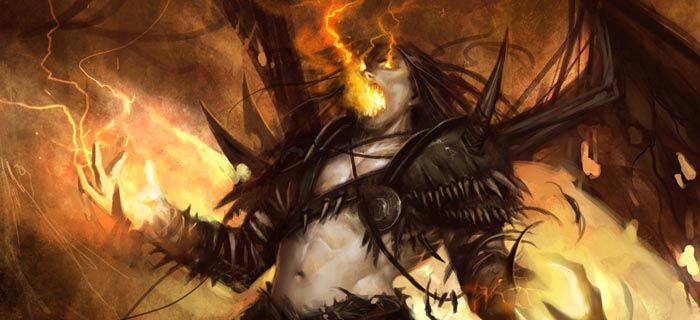Picking a fighting game main: Finding your niche [part 2]
Want to know more about how I chose my main, Vega?
Read Finding Your Niche [Part 1].
The benefit of playing Street Fighter games is that Capcom continually releases new iterations that rebalance the game. Of course, I knew since Vega was low-tier in Vanilla (the original SFIV) he would be getting buffs for sure.
With Super SFIV, the second iteration of the game, I was floored – some of the buffs they gave him were insane, and made him much more of a complete character that could function at a high level.
His combos, mixups, and defense were all enhanced, with absolutely zero downsides.
Obviously, I benefited from this hugely – I had more options, and since I already had such a vast knowledge base, the additional information was just supplementary. I had more success during Super than during Vanilla, and while some of that had to do with the buffs, a lot of it still had to do with the fact that I was constantly seeking more knowledge, and constantly trying to gain an edge on the opponent – this was now a habit, after having played Vanilla SFIV for so long. The new tools at Vega’s disposal were an extra incentive to learn up – he had new combos that worked on more characters, and overhead (an attack that hits crouching opponents) and an invincible reversal, something Vega was lacking in Vanilla. I took my time to figure in each of these additional attributes to find exactly where they fit in Vega’s playstyle and how I could use them to their fullest potential, just as I had all throughout Vanilla.
The skills I began to develop while playing Melee and Brawl transitioned into an extra bit of initiative – instead of focusing on character balance and relative strengths and weaknesses after reading tier lists, I began to develop a complete gestalt of how Vega worked. This involved studying frame data for not just Vega, but also for every other character in the game, to make sure that no bit of matchup knowledge escaped me and so that I could capitalize on anything an opponent didn’t know.
Obviously, this level of studying and involvement was much greater than the effort I put into learning Melee and Brawl characters – I read far more into every move and character attribute in SFIV than I did during those games, and it paid off massively. My Vega was a contender, after being unknown in Vanilla.
Street Fighter Four, the Third
Arcade Edition, SFIV’s third iteration, added a bit of adversity, as Vega received some questionable nerfs, while receiving – in my opinion – an amazing buff. His low medium kick was sped up by 2 frames, which was a 25% speed increase, which was tremendous. This buff came at a cost, as Vega’s damage, hop kick, and Ultra 2 were all nerfed. On one hand, I lamented the loss of tools that Vega suffered with this iteration – especially the hop kick, a vital part of Vega’s offense – but I knew that a buffed low medium kick was more than enough to make up for it.
This was a quick series of thoughts – not a long, deliberate process. Again, I had developed analytical skills over every fighting game I played, and they improved tremendously during Vanilla, where I desperately sought wins at any cost. I was able to observe the impact of the changes very quickly because of my practice with analyzing gameplay and the metagame, and was prepared to understand how these changes would impact Vega’s gameplan and matchups.
Despite Vega’s changes, though, my focus was on a different character. Some of my friends in the gaming community had talked to me about “tiering up” because they figured my talents deserved a better character to utilize them with. During Arcade Edition, four new characters were introduced, and two of them were clear-cut top tiers – Yun and Yang. Yun was deemed particularly volatile, and because I figured I ought to take my friends’ advice, I took up Yun.
Top Tier™ trouble
This was a total disaster. I never accomplished anything – I scraped by with a 50% win rate compared to my 80% win rate with Vega, and got demolished when I tried to use him at a tournament. I was confused – the dude was clearly the best character in the game, with a wide variety of tools and a staggering number of carefree matchups. So why was I losing?
The answer was simple – I totally took the character’s strengths for granted. I stopped reading into the game, stopped learning, and it kicked me in the ass, hard. I didn’t have a legitimate strategy for most opponents, and my knowledge base was nonexistent. A trainwreck.
That taught me an important lesson, though – even far worse characters than both Vega and Yun, like T. Hawk, who I picked up just for fun, had a far better win rate than my Yun. I realized quickly it was simply because I was far more invested in being successful with these characters. I was drawn to something about the character, and as a result, I was simply more involved.
Playing Yun and not being interested in his rushdown-oriented playstyle while I typically play zoning-oriented characters was a mistake. If I’m not interested in him, there’s no reason for me to play him. I go back to Yun once in a while, simply because I do know some of his tricks and it can be fun to run someone over with him, but as far as high level competition goes? Forget about it. After the tournament where my Yun got demolished, I went back to Vega and never looked back.
Can you nerf my characters, please?
The same thing happened to me during vanilla Marvel vs Capcom 3.
While I basically dropped Marvel in June of last year to focus solely on Street Fighter IV, I ran a team of Dante/Sentinel/Whoever for the majority of my time spent playing the game. Dante was a clear cut top tier – Sentinel, not as much. In all honesty though, I was piggybacking on Dante’s crazy good attributes and Level 3 X-Factor Sentinel for the majority of the time. When it came time to actually grind out matchups like I did in Street Fighter IV, I had no idea where to start.
Any time I fought a common character, like Wolverine, Phoenix, Sentinel, or Doctor Doom, I’d usually get by OK just by virtue of the fact that my mixups would eventually kill all three of their characters. I sort of subconsciously acknowledged each of the opposing characters’ skills and abilities and just worked around them, but largely ignored most of the technical aspect of the game that I thrived on in Street Fighter IV using Vega. If I ran into a more unfamiliar character like Taskmaster, I’d spend the whole round getting wrecked until I finally landed a stray hit – and of course, in keeping with my Marvel habits, I’d burn every possible resource to make sure the character who gave me the most trouble died. While that’s a useful tactic in high level Marvel play – to get rid of “the problem” – it’s not a good habit to spend constructive, casual matches doing that sort of stuff. Actually putting in the time and learning what it is that is so problematic about the other character is a far better long-term strategy.
My reliance on quick and easy damage would be repeated even if Dante, my best character, died – Sentinel would pop level 3 X-factor and just clean house. I didn’t really have to learn anything to do that – just had to be a little patient with jumping normals and wavedashing into mixups and eventually the damage would come. Obviously, patience, care, and spacing are all skills that are heavily emphasized in Street Fighter, but the technical aspect of my Sentinel play was completely superficial. It was all short-term, escapable, weaksauce shenanigans. No legitimacy, no passion – just a wash.
The fact that Dante was so strong in that game and Level 3 X-factor Sentinel was so unbalanced pretty much eroded my desire to learn more about the game. I was being rewarded too much for doing too little, and it pretty much evaporated any desire for playing the game I might have had. Really, it was a similar lesson to when I had played Yun, but since I was far more passionate about Street Fighter than Marvel, it didn’t occur to me until my fiasco with Yun that I had been doing the same thing throughout Marvel.
The difference is, I don’t find any characters as enjoyable in Marvel as I find Vega in Street Fighter. I blame that on personal taste – I don’t find it very appealing to get killed in one hit so frequently, and nearly everyone is about that in Marvel. Regardless, take your time with new games, but stay committed to learning – it’ll help you be more successful with your games, and allow you to learn more quickly whether you actually like them or not.
Coming full circle
That brings me to the crux of this article, and my argument about picking characters in a fighting game – pick who you like. It’s simple – pick the characters you’re drawn to. Playing at a high level, or even a casual level, demands involvement on your behalf, and you can’t force that. In any good movie, chemistry between the characters is important – in a fighting game, chemistry between your character and you is absolutely necessary.
In a game with as many characters as Street Fighter IV AE 2012 (39 now) there is bound to be someone you like. And really, that’s the benefit of the game as it is now – there is a ridiculous number of playstyles available to any competitor from the lowest level to the highest.
Since I began by picking low tiers – Ike and Vega – I began to develop analytical skills that were necessary to me being successful with those characters. But I seriously think even someone who accidentally picks a top tier because they like them can come up with similar analytical skills. Even if they didn’t, there are reasons top tiers are successful, and there are definitely reasons why top tiers eventually lose to characters who are far worse than them – pretty much any meaningful event in a fighting game is an incentive to learn, and get better.
One of the greatest aspects of fighting games is that these matches where low tier characters beat top tiers do happen, and it serves as a valuable reminder to everyone to stay on top of not only your game, but everyone else’s as well. Mastery of the knowledge base is key – in Street Fighter and all competitive video gaming.
Transfer of power
Because I’m so invested in Vega, I find myself comparing pretty much any character I look at in other fighting games to Vega – Sentinel in Marvel 3 uses his normals to do damage and zone, Dante has huge range on his weapons, Firebrand has a slide, Duo Lon has amazing mobility, etc. Perhaps it’d work for most players to find a character they enjoy a lot and then continually relate to them with other characters in other games, just so that the habit of positive learning can remain consistent through to other games. I obviously failed to do this in Marvel 3, but I’ve gotten to the point playing King of Fighters XIII that I like the game for totally different reasons than Super Street Fighter IV AE 2012 anyway.
Now, when I play new games, I pick up on new information more quickly each time, simply because gameplay analysis is a skill I continually subconsciously develop. So for all the new players out there and people who are looking to get into fighting games, or looking to step up their game after struggling with many characters – pick the character who jumps out at you, and stick with him or her at all costs. Learn everything in your power to gain an edge on every opponent, and forget about tier lists – just create positive habits in both terms of gameplay and gameplay analysis.
Anyone can do it – fighting games are daunting because they require such a vast knowledge base, but they are all the more rewarding when you begin to delve into that knowledge. And because fighting games are competitive by nature, there are times when you will be rewarded for your knowledge in a big way.

![Picking a fighting game main: Finding your niche [part 2]](https://www.toptiertactics.com/wp-content/uploads/2012/05/mvc3roster.png)






I definitely agree that picking a main in a fighting game (or really any game with characters/classes) has to be about finding something that matches your style. Even if your character is bad, you’ll WANT to win if you’re playing as someone you like due to playstyle or personality.
I could never really play as Ryu just because he is so bland. At least Ken has that egotistical thing going on.
Finding a playstyle in a character is definitely important. You will generally do better with a character that fits you (unless the game’s balance is totally borked) than someone who is “better.” Tiers definitely exist, but they do not define which character is best for you or who is necessarily the easiest (sometimes they are the easiest though, lol).
As a long-time Hakan mainer since his release (D tier then and D tier now) I’d say this is mostly true. No other character really “clicks” like he does for me, and finding out some new tech and putting it to use in a bad matchup or even in just a regular fight is really rewarding.
I second Hakan and boy is he a blast to play.
Yo Joz, I’m thinking about picking up SF4:AE for funsies and to eventually get good when playing with/against friends/enemies and some online play, you think that’s worth doing? How hard will I be trampled?
Of course I think it’s worth doing. If you’re looking to play with friends it’s a little dependent on how much each of you are looking to put into the game, as if you get too good your friends won’t wanna play. Playing online will likely be an interesting experience at first as yeah, it’ll probably be pretty rough for a while. But street fighter is a game that gets the more fun the more you put in, and you can’t really know if you’ll like it or not without trying it out so I say go for it man!
Really great read. I have played a bit of SF4 and SFxT over the past few months but I’m yet to find a main. I tend towards Balrog quite a lot so I think I will try to get good with him, the only problem I find are his specials are hard to pull off!
You get used to charge moves quickly and after a while they are actually a lot easier to pull off than other specials. It helps a lot though if you have a 4-gate arcade stick.
[…] more tools or is easier to learn and adapt to. According to Jozhear from Top Tier Tactics, in his article about picking a main, his main in Street Fighter IV series has always been Vega, but when he switched to Yun, he took […]